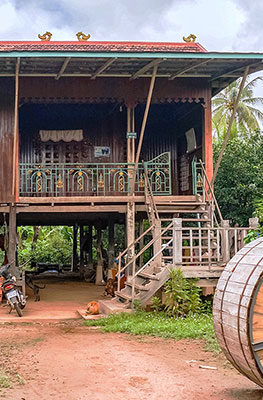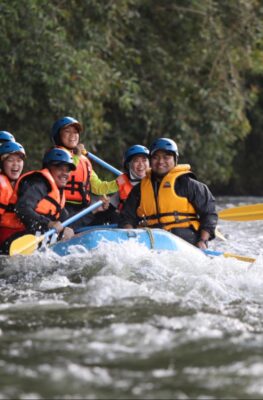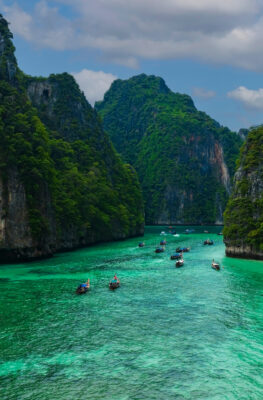Published on September 25, 2017
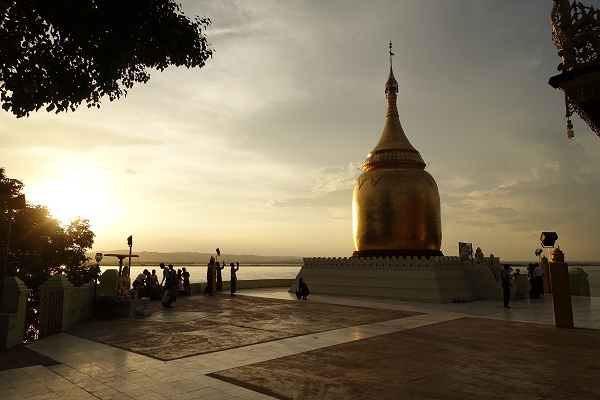
As more travelers take notice of Myanmar, Cambodia, Vietnam, Thailand and Laos, a growing number have taken to their rivers – and their accompanying opportunities for adventure.
Southeast Asia’s civilizations were born on the shores of their rivers. It’s hard to imagine Yangon or Bagan without the Irrawaddy, or Luang Prabang without the Mekong. Visit any of the region’s largest cities, and you’ll find a cruise ship ready to sail you downriver to some of the region’s finest landscapes.
Two major river systems in Southeast Asia – the Irrawaddy that runs down most of Myanmar, and the Mekong that winds through Vietnam, Cambodia, Thailand and Laos – now serve as the backbones of cruise itineraries that last between two days and two weeks.
The most popular northern Mekong River expeditions depart from Houei Xai on the border between Laos and Thailand, while Mekong Delta cruises depart from Ho Chi Minh City in Vietnam. Irrawaddy River cruises cast off from Bagan or Mandalay in Myanmar, sometimes going north as far as Bhamo near the border with China.

Mekong River: Lifeblood of Indochina
At 4,350 km in length, the Mekong touches most of Southeast Asia’s mainland countries in its long journey from the Tibetan plateau to its Delta draining into the South China Sea.
The Southeast Asian stretch of the Mekong is not completely navigable – the mighty Khone Phapheng waterfalls in Laos blocks the way for boats – but cruises regularly take to the river on either side of the barrier.
North of Khone Phapheng, for instance, a popular short cruise depart from Houei Xai on the border between Thailand and Laos, taking a leisurely two days’ trip that stops at Pakbeng for the first night, then terminates at Laos’ cultural capital Luang Prabang.
Travel blogger Edgar Alan Zeta-Yap took on the more significant half of this two-day itinerary a few months back. “We started from the middle point, Pakbeng, so our cruise was only one full day,” he explains. “We still spent one night in Pakbeng, in a really nice riverside resort along the Mekong River.”
Pakbeng is more commonly known as a stepping stone to Luang Prabang, but this unassuming riverside settlement has its own charms. “It’s a very small town, a very quiet town,” Edgar tells us. “We went to the main town center, a half hour walk from the resort, to watch the monks collect alms.”
The riverside resorts in Pakbeng reflect the down-home charm of the Lao countryside. “[We all] had our own cottages, it was all wood so it really felt so rustic,” Edgar explains. “When we opened the windows, there was a nice view of the Mekong River right below.
“And it’s set in a really lush garden, the bungalows are very spread out,” he continues. “It’s actually very romantic! If you’re going on a honeymoon, [this cruise is] a very suitable activity for that.”

Departing at 8am the next day, Edgar sat in cozy comfort on a single-decked river boat, with facilities that included lounging areas, toilets, and a buffet table. Along the way, the boat made two stops.
First, says Edgar, “was the weaving village [where] we stayed for an hour and a half… We went there to see the traditional handloom weaving of the Lao tribes.” The tribes in the village sell traditional hand-woven fabrics.
Later in the afternoon, the boat stopped at Pak Ou Caves – “it’s a shrine that was established in the 15th century,” he explains. “It’s called the Cave of a Thousand Buddhas, because people would go there and leave Buddhas of different sizes.”
The scenery between Pakbeng and Luang Prabang is perhaps the river cruise’s top attraction – distilling the natural charms and the quiet cultural murmur of the Lao countryside. “Going by river, it matches the old world atmosphere of Luang Prabang,” Edgar tells us. “That’s how people went to Luang Prabang, that’s how dignitaries and traders went to visit the kingdom. Most of their major temples are also by the river, allowing people to just drop by and climb up the riverbank.”
Approaching Luang Prabang, Edgar tells us, the “charming French colonial houses and Buddhist monasteries” can easily be seen. The trip ended at 4 in the afternoon, enough time to wander on foot and see the rest of Luang Prabang in daylight.
“This trip is more for people who want peace and quiet, who enjoy the serenity of nature, and want to experience Laotian culture,” Edgar concludes. “Go if you want to rest, have a tranquil getaway, or go soul-searching.”
For other Southeast Asia river adventures, embark on this 7-day, 6-night trip down the Mekong from Ho Chi Minh City in Vietnam to Siem Reap in Cambodia, or this longer luxury trip through Laos, Vietnam and Cambodia via Mekong luxury cruise ship.
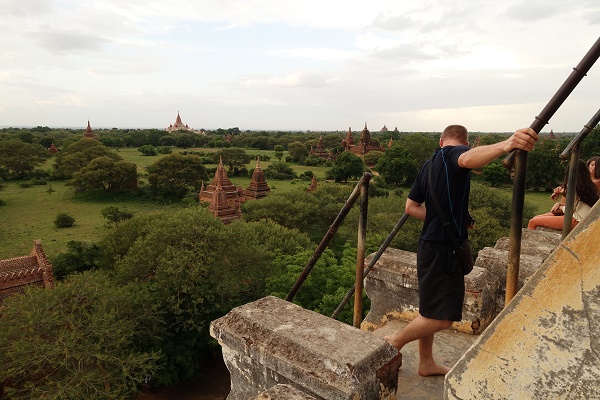
Irrawaddy River: Four Days in Myanmar’s Ancient Heart
Take a cruise down the Irrawaddy River from Bagan to Mandalay, and you’ll find yourself sailing down one of Southeast Asia’s most ancient civilizations. Bagan, once the center of the Pagan Empire, populates a plain on the eastern banks of the Irrawaddy River with over 2,000 remaining Buddhist temples and stupas constructed between the 10th and 11th centuries.
From Bagan, the river meanders as it follows a route to Mandalay, the country’s second largest city and former capital of the last Burmese kingdom before its capture by the British in the 19th century.
Cruises down this stretch of the Irrawaddy can last anywhere between one to seventeen days, slowly chugging down the massive river to northern settlements like Bhamo, Mingun, Tagaung and Shwegu.
Four days is enough: bloggers Vid and Savi of Bruised Passports took this leisurely cruise from Bagan to Mandalay that exposed them to some of the Shan State’s most scenic settlements in between.
“We chose the cruise that started in Bagan and ended in Mandalay,” Vid explains.
After an auspicious start exploring the best Bagan temples (including Shwezigon and Ananda Temples, and other stupas with beautiful sunset views like Shwesandaw), the travelers had dinner on board the luxury river cruise ship before setting off to Mandalay.

In between, the cruise ship made stops at Ava, another former capital for Burmese kings between the 14th and 19th centuries, where a fascinating landscape of monasteries and stupas remain from the area’s glory days; and Mingun, home to a massive uncompleted stupa and the largest un-cracked bell in the world.
At the end of the cruise, Vid and Savi’s ship docked at Mandalay, where they ventured to the Royal Palace; the U-Bein teak bridge over Taungthaman Lake; and local religious sites the Mahamuni Pagoda and Shwe In Bin monastery.
Their accommodations kept them in the lap of luxury. “The ship has 27 super comfortable and luxurious cabins,” Vid explains. “The food and wine aboard was exquisite. We relished almost all the dishes but if we had to pick a few those would be the ravioli served with egg yolk truffle butter and the Burmese tea-leaf salad.”
The boat even had activities on board to break the monotony of the long cruise. “If you’re interested in cooking, the chef hosts a cooking class where he teaches how to make the perfect tea-leaf salad,” Vid tells us. “In the evenings, there is a cultural show on-board where local artists come aboard the ship and entertain the guests with colourful dance performances.
“Boredom was never a factor as there is plenty to do.”
Find a different route down the Irrawaddy on this 21-day/20-night trip from Yangon in Myanmar to Luang Prabang, Laos, or embark on these unique Myanmar experiences: seeing the Pyu Ancient Cities, or going temple-hopping in Bagan.
* * * *
You’ll see Edgar Alan Zeta-Yap posting regularly on his official site the EAZY Traveler. To check out his regular social media postings, follow him on Instagram and Facebook.
You’ll find Vid and Savi posting about their travels on their official site Bruised Passports – they also post social media updates on Twitter, Facebook and Instagram.



